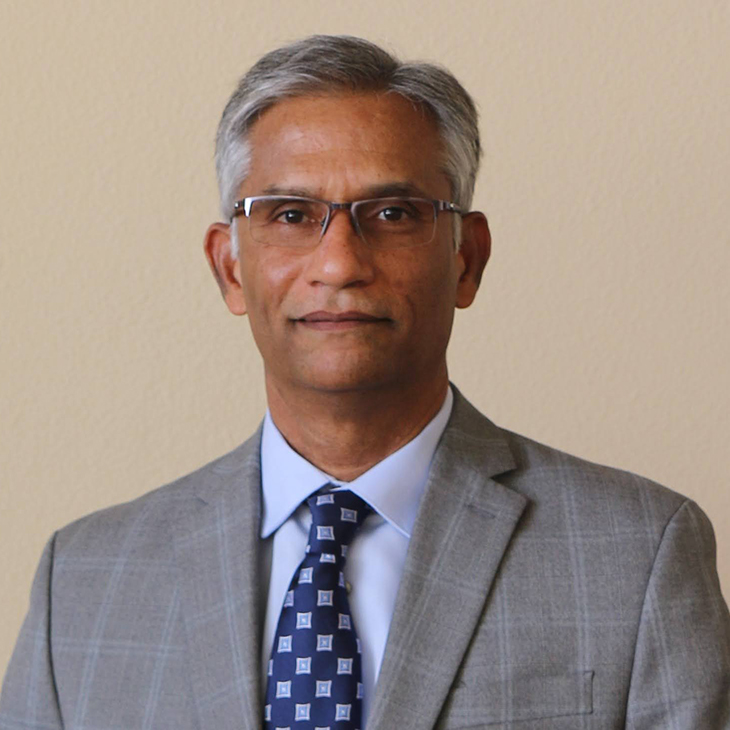
OSU’s IT department gets new chief information officer
Wednesday, August 11, 2021
Media Contact: Mack Burke | Editorial Coordinator | 405-744-5540 | mack.burke_iv@okstate.edu
Oklahoma State University has a new chief information officer, Raj Murthy, who took over from longtime predecessor Darlene Hightower at the beginning of August.
Despite only being a little over a week into his new job, Murthy feels like he has a good sense on what OSU’s IT department can collectively achieve. The information technology department has a part in everything from security to technical support, to innovation.
A veteran in the higher ed IT realm for 25 years, Murthy liked what he saw about OSU while at his previous school — Pima Community College in Tucson, Arizona.
“OSU is a research university, which means there are incredible opportunities for innovation,” Murthy said. “It is a big school and has the research components for innovation and opportunities to grow.”
Murthy started at Pima in 2016 after a long career at his alma mater, Indiana University of Pennsylvania. Through his years on the job, he has seen the tech industry continue to grow exponentially, which has created more within university IT departments.
“There is incredible growth within the technology industry itself, no doubt about it,” Murthy said. “What higher education is doing now, is leveraging that technology to help the higher ed industry in several ways. One is, of course, discovery exploration research. You can do more because there is more technology to do it with — big data, analytics, AI, all of that stuff. But there is also a spark for education, the learning and teaching process of knowledge.”
Murthy said it is incredible to see how students learn in the classroom environment compared to how he had to growing up.
“So when I went to school, there was chalk, a blackboard and a chair,” Murthy said. “Today, students have augmented realities in the classroom. They can see things in three dimensions. I learned blood as a red liquid. Today, a student can see every part of how blood works: what parts it contains, how it flows, etc. What is an atom in 3D. They can actually interact with it and see it react. They can do all of that. So, what it has done for education, learning and teaching is completely transformational.
“Now, there is another new opportunity when [higher education and technology] meet, and there is this incredible wealth of knowledge that faculty, researchers, and all of these people have. They can bring all of that knowledge to life because they have the technology to bring it to life. I think anybody who is a student now is in a great place, compared to the ’60s and ’70s when I went to school.”
Murthy said all the changes come with some challenges, though. Especially with cybersecurity being such a prevalent issue, IT departments are always in defense mode to protect student data. It requires having to adapt to whatever new scam or virus presents itself on any given day.
“I would describe it as there are certain fundamental responsibilities that come with IT,” Murthy said. “For example, security. Anybody who comes to OSU should know and feel that their data is protected and we will really take care of it. Stability of the services that are already in place by the previous CIO who had great successes here. We need to continue that and make sure nothing falls. It is like a juggling act. You have to keep all of these balls in the air and make sure nothing falls. Because when we break something, it has a negative impact on a lot of people.”
Murthy is still learning what initiatives President Kayse Shrum and Joe Weaver, OSU’s senior vice president for administration and finance, want the IT department to pursue.
“All of those strategic initiatives and goals come from the top,” Murthy said. “What IT does as a department, what do we produce, what shouldn’t we be producing. Right now, that is my primary goal, is to learn the organization and learn all the things expected of IT and exceed those expectations.”
Weaver said he is confident in Murthy’s ability to continue advancing OSU’s IT department.
“I am very excited about him joining the OSU team,” Weaver said. “He is a fresh set of eyes and will help us make improvements in the information technology area.”
Like almost everyone, Murthy has seen some changes to his work because of the pandemic. OSU is returning to in-person study this fall after more than a year of remote learning playing a part in the curriculum.
Murthy said OSU’s IT is prepared for everyone to come back and is working to create an accommodating environment for all students.
“What I see is opportunities because they are coming back after a while,” Murthy said. “Student expectations might have evolved a little bit, based on what they have been through. We have to be very attentive to those changes, on those needs that the students will come with. We have to be very agile to be able to meet those needs quickly so that we are there for them when they need it.”
Murthy moved to Stillwater with his wife, Christine, and twin daughters Ava and Sofia. He is excited to see how his department will continue to serve the university in a crucial, ever-changing area.
“We have to ensure the services we provide are stable, accessible and guaranteed to the people who use it on a daily basis,” Murthy said. “That is my first responsibility: To make sure the light is not just on, but it is burning bright and will stay on for a very long time.”
